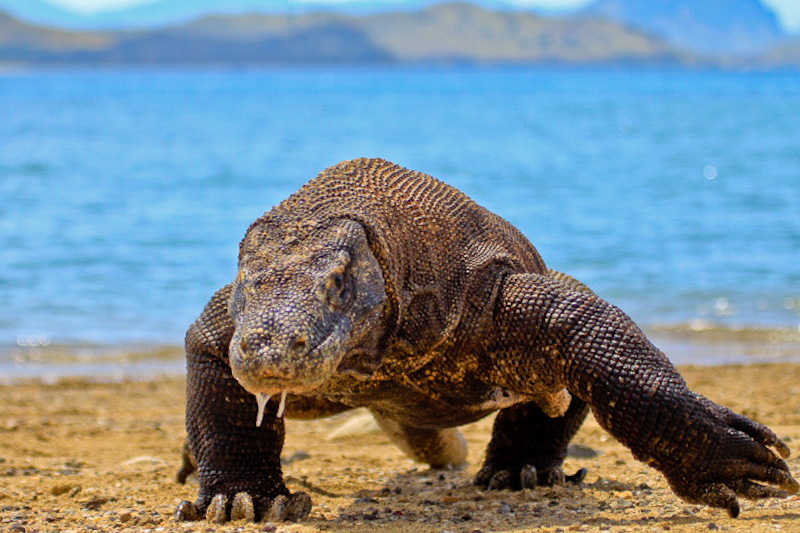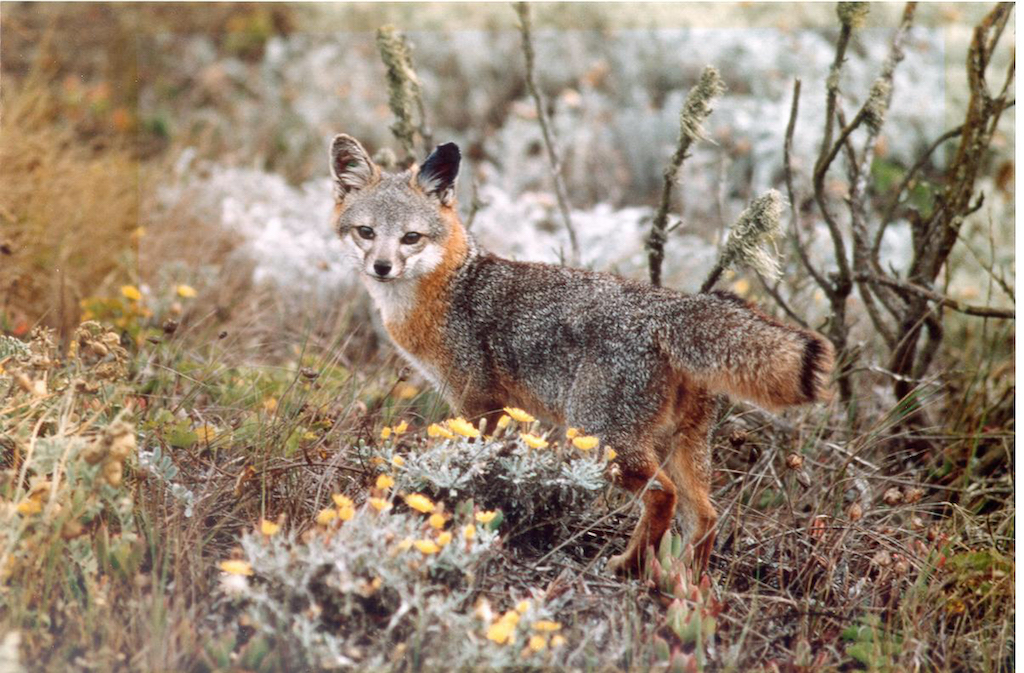Foster's Rule, or the Island Effect
Part I: Insular Gigantism
The Komodo dragon, the Flores giant rat, kakapo, the now extinct moa, the dodo or the elephant bird, or the New Caledonian giant gecko which I’ve already covered – these and many other animals have one thing in common: they live on islands and they’re larger than their continental relatives. In fact, some of them are the largest species within their taxon.
One part of Foster's rule, a.k.a. the island effect, predicts that small mainland species, such as rodents and marsupials will evolve into larger ones when they colonize an island. A lack of mammalian predators, especially of those who hunt smaller prey, is the most typical explanation for this phenomenon. This rule has been further developed to explain the island effect in various taxa, not only mammals.
Dispersal to islands is pretty difficult for flightless endotherms, and a typical mammalian carnivore also needs a sufficient range for foraging, so an island, if they survive their way there, may become a trap for them. With no predators around, there’s no longer a need to remain small in order to easily hide. Birds, smaller carnivorous or omnivorous animals can thus grow larger. Additionally, ectothermic herbivores, such as tortoises, are able to withstand longer periods without food, since their metabolism is slower than that of endothermic herbivores, who would easily outcompete them in a more stable environment and heterogeneous, which the mainland typically is, so they can grow large on islands. Even-toed ungulates also benefit from a lack of competitors, followed by a lack of predators on islands.
Becoming an island giant is anything but easy. A sufficient amount of resources and a lack of predation/competition pressure is needed for this phenomenon to work. It’s often difficult to conclude whether insular animals are the size they are because they’ve grown larger, remained large or actually shrunk, a phenomenon known as insular dwarfism, which is covered below.
Perhaps you could call the Komodo dragon (Varanus komodoensis) the most obvious example of an insular giant. It’s an ectotherm, so its metabolism is slower and it’s less active than endothermic predators. With a lack of endothermic predators on the island, i.e. fewer competitors, Komodo dragons thrive as there’s no pressure on high activity. The question still is, however, if the Komodo dragons' size truly is the result of the island effect. A study about the evolution of large varanids has shown that almost equally large monitor lizards (genus Varanus) lived across Indonesia and Australia, suggesting that Komodo dragons might only be a relict that has survived the decimation by early humans and actually just remained large. Sadly, most of Earth's megafauna went extinct as a result of human activity, including a lot of insular giants, such as the moa or the dodo.
The truth is, there's still a lot to be figured out about this phenomenon. Whether species grow or shrink on islands is a matter that’s probably better explained by the animals’ trophic level than by their absolute size.
So let’s see why some insular species actually shrink.
Part II: Insular Dwarfism
It’s pretty hard to grow large because there are many constraints one must overcome on the way to becoming big. Staying small and even becoming smaller is energetically less demanding. Actually shrinking in mammals may happen at least ten times faster than growing.
Take for instance the island fox (Urocyon littoralis) that inhabits six of the eight California Channel Islands. Foxes inhabited the islands about 9k years ago and they shrunk at a rather fast rate: fox bones found at an archaeological site dating back to about 7k years ago are already much smaller than those of the foxes’ mainland relatives. This means that they had shrunk in under 2000 years, in a blink of an eye in evolutionary time. What's even more surprising is that their populations have persisted despite having very low densities and poor genetic diversity.
As you may already know, being small, but not too small, is beneficial for the survival of the species. Small species grow faster, reproduce earlier in their life and consume relatively less than the large ones. They can have larger populations and are thus less likely to go extinct. Islands restrict the animals’ range, which in turn creates a restriction on the availability of resources, a problem that’s hard to overcome for large animals. Shrinking may happen when a species adapts to a smaller range and to poor resources. But there’s more that affects shrinking. Being large is beneficial for the individual because it helps deter predators, since most predators feed on prey that’s much smaller than themselves. Shrinking may, thus, happen when it’s no longer necessary to build mass in order to avoid being predated upon.
A nice example is the Nosy Hara Island population of dwarf lemurs (Cheirogaleus sp.) that lives about 65 km away from mainland Madagascar and was discovered in 2015. They aren’t just tiny, they also completely lack fear of predators. That is one hell of a problem may a predator be introduced to this environment… like… you know… it has already happened a couple of times around the world already thanks to humans.
So, earlier I argued that some species grow large in the absence of predators. Now I’m claiming that some also shrink. Am I going crazy? Well, by now, it must seem quite obvious that the effect of escaping predators cannot solely explain insular gigantism or dwarfism - species can either grow or shrink in the absence of predators. Environmental factors play a crucial role in the evolution of insular species, and it's important to also look at their evolutionary history.
Islands are like evolutionary labs where we can observe how species adapt in the absence of some particular factors that are always present on the mainland. In some taxa we see shrinking, in others we see growth. Perhaps there’s something like an ‘ideal size’ for each taxon, and species are either larger or smaller than the ‘ideal’ because they’re affected by something in their environment. You can read about that here.

Photo credit: Adhi Rachdian
| Common name: | Komodo dragon |
| Scientific name: | Varanus komodoensis |
| Phylum: | Chordata |
| Class: | Reptilia |
| Order: | Squamata |
| Family: | Varanidae |
| IUCN status: | Vulnerable |
| Population trend: | Unspecified |
| Scientific reading: |

Photo credit: National Park Service
| Common name: | Island fox |
| Scientific name: | Urocyon littoralis |
| Phylum: | Chordata |
| Class: | Mammalia |
| Order: | Carnivora |
| Family: | Canidae |
| IUCN status: | Near-Threatened |
| Population trend: | Increasing |
| Scientific reading: |